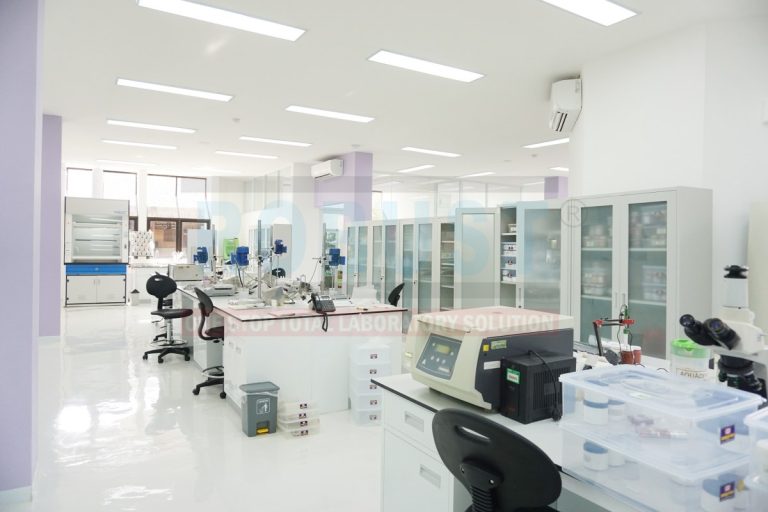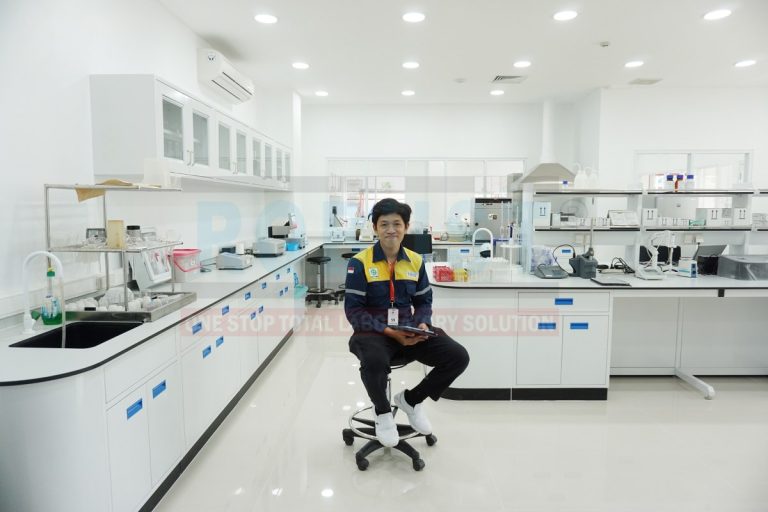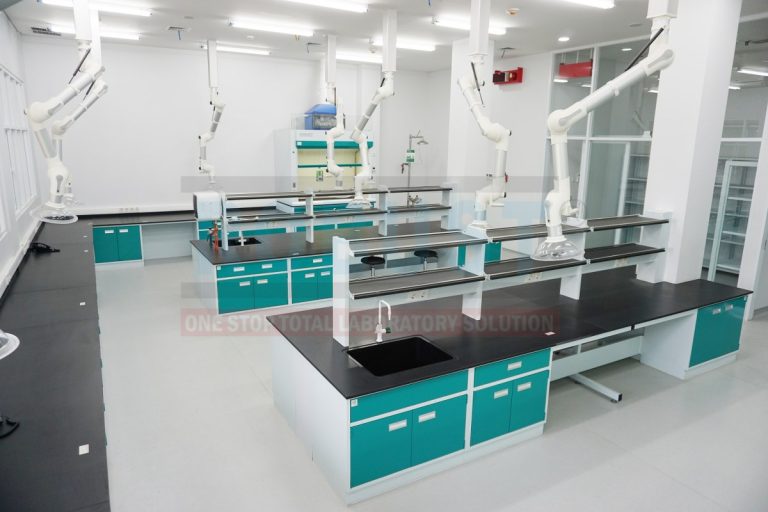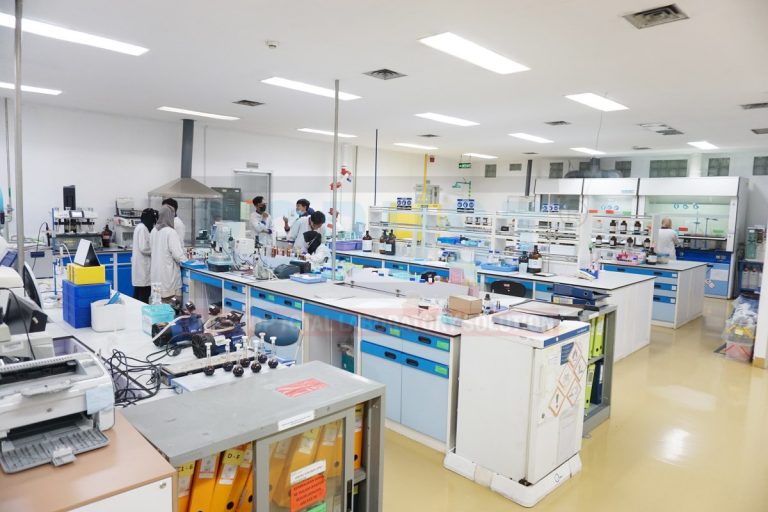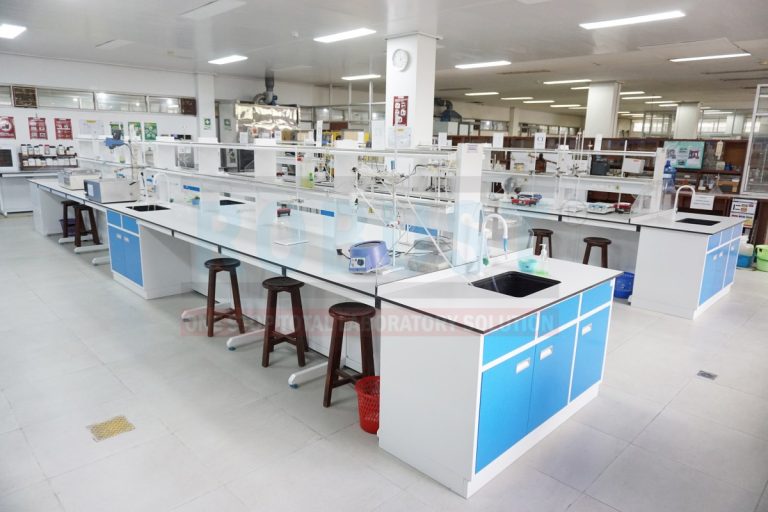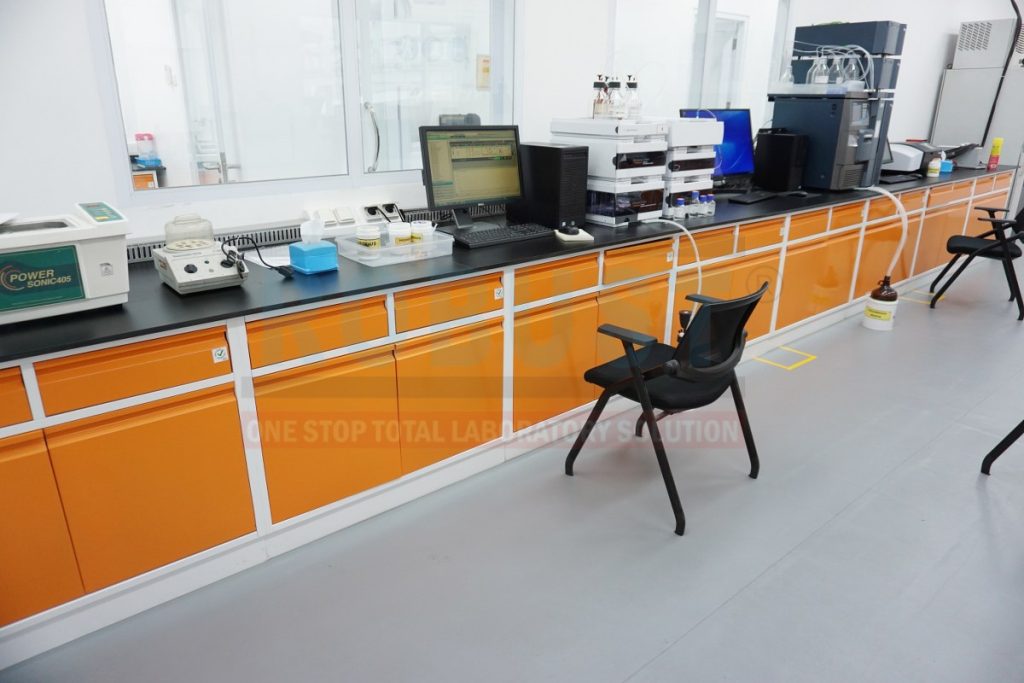
Instrument Laboratory Design
Designing an instrument laboratory requires comprehensive technical planning to ensure optimal performance of sensitive analytical instruments that are affected by environmental variations. Instruments such as HPLC, GC, AAS, ICP-MS, UV-Vis, and FTIR require controlled room conditions, stable utility systems, and a layout that supports analytical workflows.
Key Components in Instrument Laboratory Design:
🔬 Microenvironment Control
- HVAC systems are designed with high-precision capacity to maintain temperature within ±2°C and relative humidity below 60% RH.
- Insulated partitions, return air systems, and real-time monitoring sensors support a stable environment.
⚙️ Integrated Utility Installation
- Electrical systems use dedicated lines with UPS and special grounding to prevent current fluctuations and electromagnetic interference (EMI) affecting the instruments.
- Gas distribution (e.g., nitrogen, helium, hydrogen) is equipped with pressure regulators, flow control, and leak detection systems.
📐 Ergonomic and Modular Layout
- Instrument placement is based on functional zoning (preparation, analysis, post-analysis) to optimize workflow and reduce cross-contamination.
- Instrument tables use vibration-damping and chemical-resistant materials.
💾 Data Management and Safety
- Integrated data networks connect to local or cloud servers for digital data recording and remote monitoring.
b) Safety systems include gas-based fire suppression (FM-200), local exhaust (fume extractors), and room access control.
📑 Compliance with Standards
- Design complies with ISO/IEC 17025 guidelines, Good Laboratory Practice (GLP), and Occupational Health and Safety (OHS) standards for laboratories.
With an engineering-driven approach and a deep understanding of analytical needs, we deliver instrument laboratory design solutions that support result accuracy, operational efficiency, and long-term system sustainability.
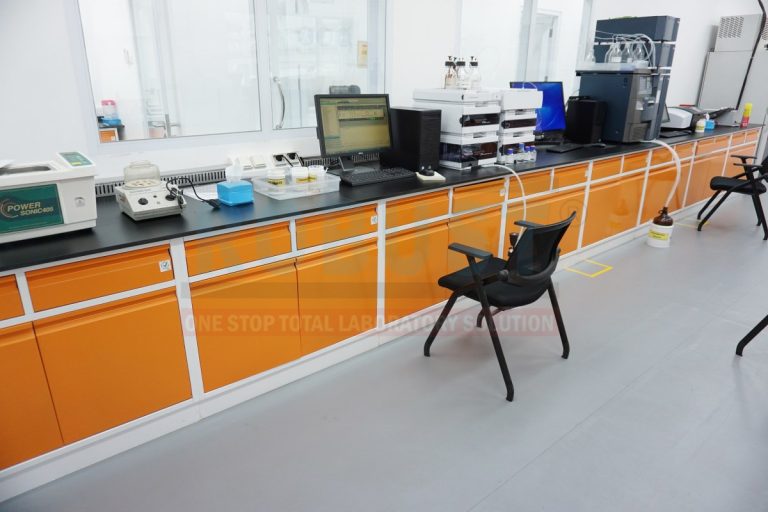
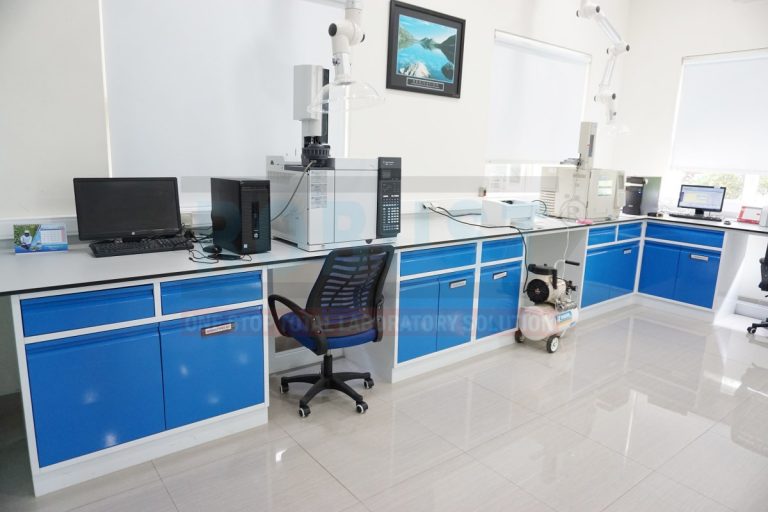
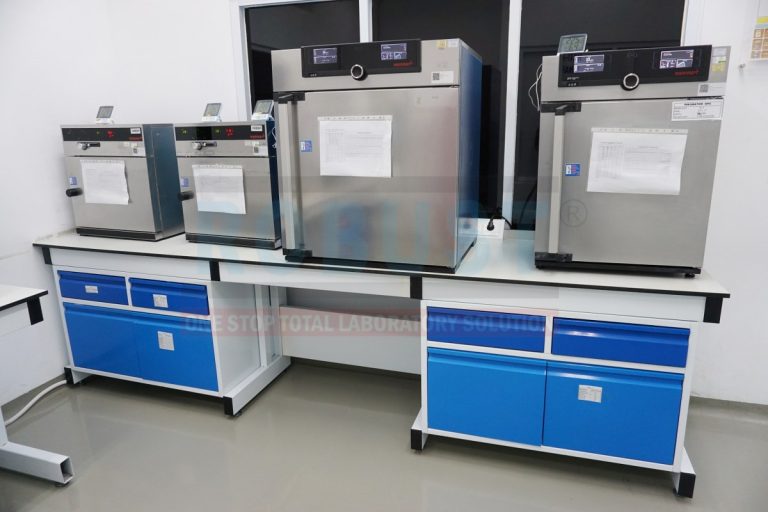
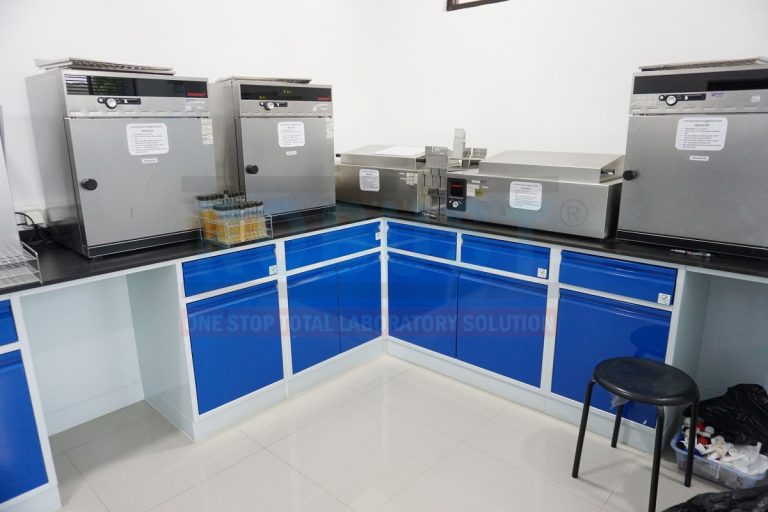
Related Project
Media Sosial Link
Facebook
Youtube
Instagram


